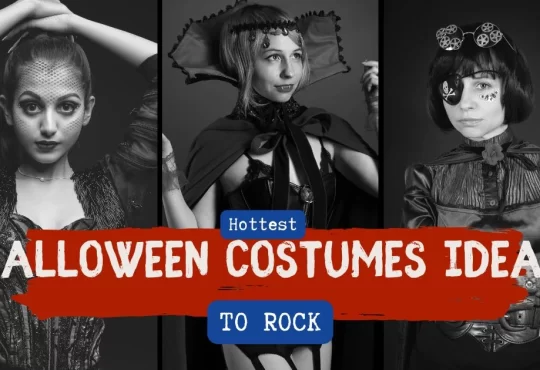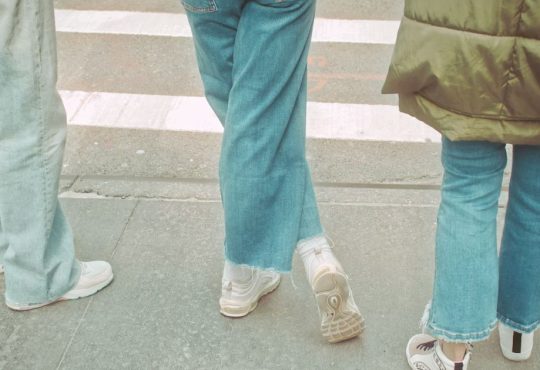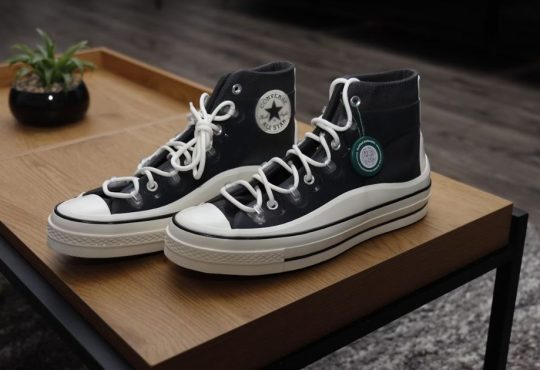The internet has a way of turning the most random images and phrases into cultural phenomena almost overnight. From grumpy cats to “Distracted Boyfriend” and beyond, memes have become modern folklore, and now the fashion world is taking notice. Clothing lines inspired by viral memes are transforming digital humour into wearable statements, offering a playful, irreverent way to express personality through style.
How Meme Culture Is Shaping Today’s Fashion Trends
Memes thrive on relatability, humour, and cultural commentary—and fashion brands are seizing this opportunity to connect with a digitally-savvy audience. Unlike traditional fashion inspiration drawn from art, history, or street style, memes are instantaneous, viral, and constantly evolving. Clothing that references memes allows wearers to signal their cultural literacy, participate in internet trends, and showcase humour all at once.
Social media’s influence can’t be understated. Viral memes often come with built-in communities and hashtags, giving meme-inspired fashion an organic marketing boost. Limited edition drops featuring popular meme imagery or phrases often sell out quickly, demonstrating that the appetite for these designs goes beyond novelty—it’s a form of digital self-expression.
How Brands Are Translating Memes Into Apparel
Many fashion labels and independent designers are turning viral internet content into wearable art, creating clothing that transforms fleeting memes into stylish, culturally relevant statements.
- Graphic Tees: The most common medium, featuring iconic images or catchphrases from memes. These T-shirts turn a brief online joke into a tangible, wearable statement.
- Streetwear and Caps: Meme references appear subtly or boldly on hoodies, sweatshirts, and caps, blending humour with high-fashion street sensibilities.
- Collaborations: Some brands collaborate directly with meme creators or social media influencers to create exclusive collections that celebrate viral moments while maintaining credibility in the fashion world.
- Customizable Apparel: Platforms that allow users to upload meme graphics onto jackets, T-shirts, or sneakers give everyone the chance to wear their own viral humour.
The appeal lies in the combination of humour, nostalgia, and immediacy—memes allow fashion to be playful, ironic, and deeply personal at the same time.
Memes as a Cultural Bridge
Meme-inspired fashion does more than elicit laughter—it serves as a bridge between digital culture and real-world identity. Wearing a meme on a hoodie, T-shirt, or cap signals participation in a shared cultural moment, creating instant recognition among those who “get it.” In a society where viral literacy is increasingly valued, these garments allow individuals to communicate humour, values, and personal style without words, turning fleeting online trends into tangible markers of belonging.
The influence of memes in fashion also demonstrates the fluid interaction between online culture and physical style. References that begin as viral images or phrases on social media are being translated into wearable forms, making digital humour a visible part of everyday life. This is not limited to casual apparel—forward-thinking designers are incorporating meme culture into runway shows, capsule collections, and limited-edition luxury pieces, proving that internet humour can coexist with sophisticated design. By merging high fashion with viral trends, meme-inspired clothing transforms ephemeral digital jokes into lasting cultural statements, highlighting the growing power of the internet to shape identity, taste, and creativity in the physical world.
Challenges and Considerations
While meme-inspired fashion is fun and engaging, it comes with its own challenges:
Fleeting Relevance
One of the biggest hurdles for meme-inspired clothing is the rapid pace at which internet trends evolve. Memes that dominate social media today can become obscure or forgotten within weeks or months. A design tied too closely to a single viral joke risks feeling outdated almost as soon as it hits shelves, making it challenging for brands to create pieces with lasting appeal. Designers must therefore strike a delicate balance between capturing the immediacy of a meme and creating a garment that feels timeless enough to wear beyond the trend cycle.
Copyright and Ownership Concerns
Another significant challenge lies in the legal landscape surrounding viral content. Many memes originate from user-generated images, videos, or artwork, which raises questions about ownership and the right to commercialise them. Brands that reproduce these viral images without permission risk legal disputes, while creators may feel their intellectual property has been exploited. Navigating this terrain requires careful licensing, collaboration with original creators, or clever reinterpretation to avoid copyright infringement while still delivering recognisable, meme-inspired designs.
Balancing Humour with Style
A key challenge in meme-inspired fashion lies in merging playful internet references with wearable, stylish design. While a meme may be instantly recognisable online, translating it directly onto clothing can risk creating pieces that feel gimmicky or juvenile. Designers must therefore strike a careful balance, finding ways to embed humour subtly—through clever graphics, abstract interpretations, or understated text—so the garment remains fashionable and versatile.
Successful meme-inspired lines manage to strike a balance: they capture the essence of the viral moment while remaining wearable, stylish, and flexible enough to transcend a single trend.
The Future of Meme Fashion
As internet culture continues to evolve at a breakneck pace, meme-inspired clothing is poised to become more sophisticated, diverse, and influential than ever. Emerging platforms like TikTok, AI-generated content, and viral online challenges are redefining what becomes culturally relevant, and fashion is following suit. Streetwear, high-end designer collections, and everyday apparel are increasingly looking to digital trends for inspiration, turning fleeting internet moments into tangible, stylish pieces.
Beyond mere novelty, meme fashion is becoming a form of cultural commentary and personal expression. By wearing memes, consumers communicate wit, shared values, and a sense of belonging, transforming digital humour into something physical and socially resonant. Designers are finding ways to elevate these references—through clever graphics, subtle nods, or adaptable pieces—so that they feel less like gimmicks and more like artful statements with lasting impact.
Memes have always reflected the quirks, anxieties, and humour of society at large. By integrating them into clothing, designers give the internet a wearable voice, allowing viral moments to transcend screens and enter the real world. This evolution signals a future where fashion not only follows culture but actively participates in shaping it, turning transient online jokes into enduring markers of identity, humour, and style.
Why Memes Are Influencing Fashion
Memes are a language of relatability, wit, and social commentary. They spread quickly, gain instant recognition, and often create a sense of community among those who understand the reference. Fashion brands are tapping into this cultural currency to engage a digitally literate audience in a way that traditional inspiration can’t.
The appeal of meme-inspired clothing lies in its immediacy. Unlike classic patterns or historical motifs, memes are born viral and reflect the zeitgeist. Wearing meme-inspired apparel signals awareness of current trends and a sense of humour, while providing a fun way to participate in ongoing internet conversations. Social media amplifies this effect: meme-themed drops are often shared, liked, and tagged thousands of times, creating an organic marketing loop that benefits both the creator and the brand.
Translating Memes Into Wearable Art
Designers and brands are experimenting with various approaches to turn internet culture into fashion:
- Graphic T-Shirts: The most common medium, featuring viral images, catchphrases, or illustrations that reference famous memes. A single T-shirt can immortalise a fleeting moment in digital history.
- Streetwear Essentials: Hoodies, sweatshirts, and caps often carry meme-inspired graphics or slogans, blending humour with the aesthetics of modern streetwear.
- Collaborative Collections: Some brands partner with meme creators, TikTok influencers, or viral content pages to produce limited-edition collections, giving fans exclusive ways to wear their favourite jokes.
- Customizable Apparel Platforms: Online services allow users to print their own meme graphics onto jackets, sneakers, or sweatshirts, offering a personal take on viral humour.
Beyond casual wear, some meme-inspired designs have even entered high fashion, appearing in runway shows or luxury collaborations, proving that internet culture can coexist with couture sensibilities.
Memes as Cultural Currency
Meme-inspired fashion goes far beyond eliciting a laugh—it serves as a visual language of identity and belonging. Sporting a meme on a hoodie, T-shirt, or cap signals more than humour; it communicates alignment with a specific cultural moment or community. Among peers or online-savvy circles, this instant recognition acts as a social shorthand, creating connection and shared understanding with those “in the know.” In this way, meme clothing transforms digital literacy into wearable personal expression, allowing humour, irony, or nostalgia to be conveyed silently through style.
The intersection of internet culture and fashion also highlights the growing influence of online trends on real-world self-expression. Designers are no longer just translating memes directly—they are finding ways to make them timeless, versatile, and wearable. Clever graphics, subtle references, and adaptable designs ensure that a piece doesn’t feel like a fleeting novelty, but rather a statement that can be incorporated into everyday wardrobes. This approach turns ephemeral online jokes into enduring fashion items, bridging the gap between viral content and long-term style while maintaining cultural relevance.
Challenges in Meme Fashion
Despite the appeal, creating meme-inspired clothing comes with hurdles:
- Short Shelf Life: Viral trends are often fleeting, and a meme that’s popular one month can be forgotten the next.
- Copyright and Ownership: Many memes originate from user-generated content, which can lead to legal complications if used commercially without permission.
- Balancing Humour and Wearability: Designers must ensure that the garment remains stylish and functional, rather than turning into a novelty item that feels dated quickly.
The most successful meme-inspired clothing manages to capture the humour and cultural significance of a meme while maintaining a wearable, versatile aesthetic.
Meme Culture in Fashion’s Future
As internet culture evolves, meme-inspired fashion is expected to grow in complexity and sophistication. TikTok trends, AI-generated memes, viral video moments, and even niche subcultures will increasingly influence streetwear, high fashion, and casual apparel. Designers are experimenting with limited-edition drops, interactive garments, and customizable designs, giving consumers a direct hand in translating digital culture into physical style.
Ultimately, meme-inspired clothing transforms fleeting online humour into tangible self-expression. It allows people to wear their wit, nostalgia, and cultural knowledge, turning everyday outfits into conversation starters. As viral culture continues to dominate online spaces, it seems likely that memes will not just influence fashion—they will become a permanent, playful, and ever-evolving source of inspiration.





